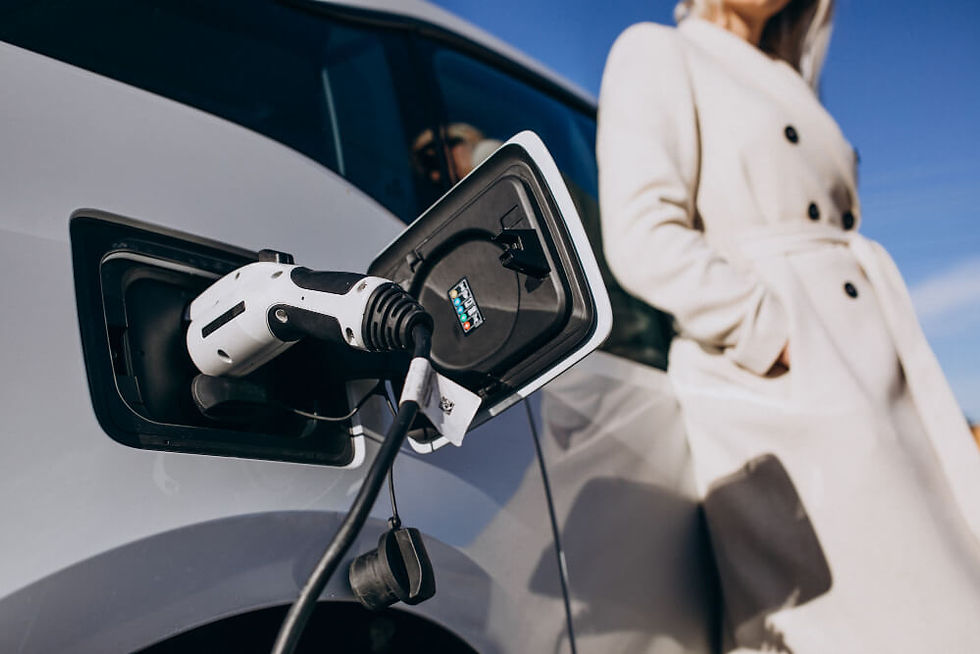Level 1 vs Level 2 Charging: Which One Fits Your Lifestyle?
- Social Media
- May 27
- 3 min read
When you switch to an electric vehicle, one of the first questions that pops up is: How do I charge it at home? That’s where the terms Level 1 and Level 2 charging come in.

Understanding these two charging options can help you make a smoother transition into EV life. It’s not about which one is better—it’s about which one fits your lifestyle, driving habits, and comfort level. So let’s break it down in plain, simple terms.
What Is Level 1 Charging?
Level 1 charging uses a standard household outlet—the same one you use for your toaster. You just plug your EV in, and it starts charging. No fancy equipment, no immediate EV charger installation needed.
Quick Facts:
Uses 120V outlet
No additional setup for most homes
Slower charging—adds a few miles per hour
It’s a plug-and-play option for those who drive short distances daily or don’t mind overnight charging.
What Is Level 2 Charging?
Level 2 charging steps it up a notch. It requires a 240V outlet, like the one used for dryers or ovens. You'll likely need professional EV charger installation to set it up in your garage or driveway.
Quick Facts:
Uses a 240V outlet
Requires EV charger installation
Much faster—adds significantly more miles per hour
This option is great for those with longer commutes, busy schedules, or multiple EVs in the household.
Think Lifestyle, Not Just Speed
It's easy to assume faster is always better—but it really comes down to how you live.
Level 1 Might Fit You If:
You drive less than 40 miles a day
You can plug in overnight without urgency
You want to start with no EV charger installation
You live in an apartment with limited charging options
Level 2 Might Fit You If:
You need quicker turnarounds between drives
You have multiple EVs or a larger battery
You're planning a dedicated EV charger installation
You want to future-proof your charging setup
Scenarios to Help You Decide
Let’s walk through a few situations that might feel familiar:
The Urban Commuter
You drive to the office and back—10 miles each way. No rush in the evenings. Level 1 could work just fine for you.
The Busy Family
Kids’ activities, work, errands—your car barely gets a break. Level 2 could make life easier with faster recharge times.
Apartment Dweller
No garage, shared parking. Outlet access is tricky. Level 1 with creative placement might work, but talk to your property manager about EV charger installation options.
EV Charger Installation: What to Know
No matter which level you lean toward, EV charger installation is something to think about early. Even if you start with Level 1, knowing what’s possible for Level 2 helps you plan ahead.
Important Notes:
Level 1 usually requires no special setup
Level 2 generally needs a licensed electrician for proper EV charger installation
Your home’s electrical system needs to support the added load
If you’re considering upgrades, talking to a professional about EV charger installation can help you explore future options.
The Takeaway
There’s no one-size-fits-all answer. Your EV charging setup should work around your habits—not the other way around. Whether you’re fine with plugging into a wall outlet or ready to install a dedicated unit, both Level 1 and Level 2 have their place.
Take a moment to think about:
How far you drive each day
How long your car is parked
Whether you want to invest in EV charger installation now or later
FAQs
1. Can I start with Level 1 and upgrade to Level 2 later?
Absolutely. Many EV owners start with Level 1, then move to Level 2 when it makes sense. Just plan ahead by checking if EV charger installation is feasible in your home.
2. Do all EVs support both Level 1 and Level 2 charging?
Yes, most EVs can charge on both. Your vehicle’s onboard charger handles the input, whether it’s from a standard outlet or a Level 2 setup after EV charger installation.
3. Is Level 2 charging safe to use daily?
Yes, if it’s set up correctly. Make sure your EV charger installation is done by a licensed professional to ensure safety and performance.







Comments